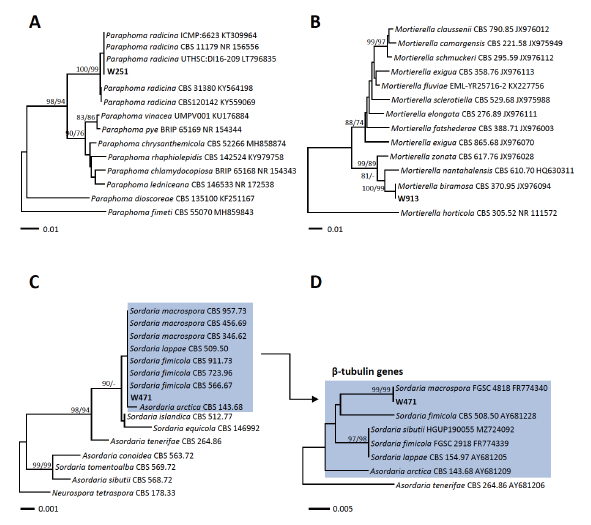Abstract
Freshwater ecosystems have a large reserve of latent biological resources that play an essential ecological role, and have significant economic and social value. Fungi in freshwater are prospective materials that can be used in the food, medicine, and biomass energy fields. In this study, three promising fungal species were isolated from freshwater ecosystems in Korea. These isolates were identified as
Figures & Tables

Fig. 1. Minimum evolution phylogenetic trees of (A) Paraphoma, (B) Mortierella species based on ITS rDNA sequences, (C) Sordaria species based on a combined dataset of internal transcribed spacer (ITS) and 28S rDNA sequences, and (D) β-tubulin sequences of Sordaria species in a blue box of (C). Bootstrapping values of minimum evolution and maximum likelihood, higher than 70%, are presented above the branches (1,000 replicates). The scale bar represents the number of nucleotide substitutions per site. The strains that were collected in Korea are shown in bold.


